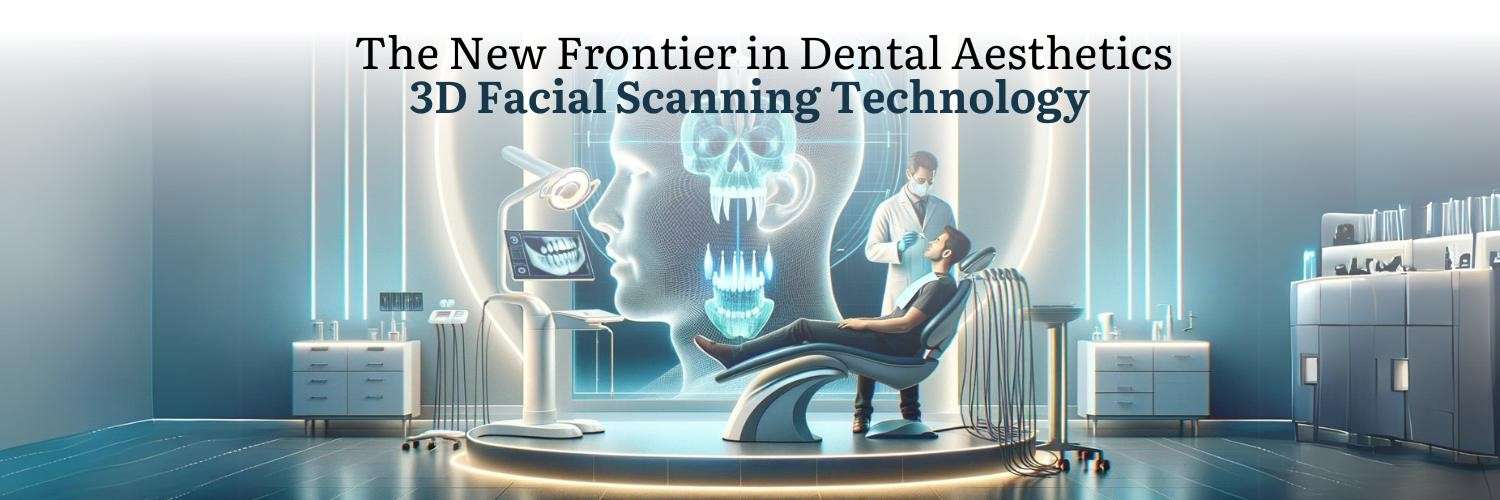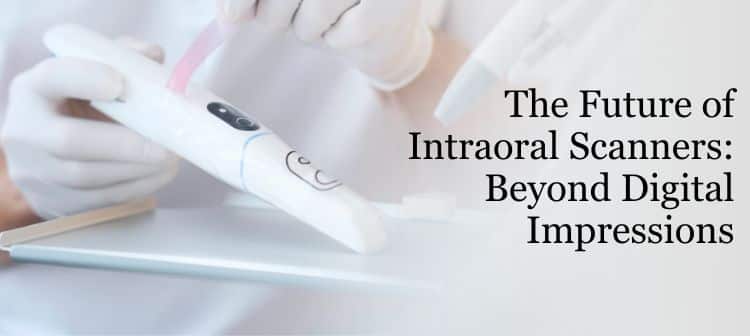Dental CAD Software: The Future of Design and Restorations
Navigating the Digital Revolution in Dentistry: The Rise of Dental CAD Software
In the constantly evolving world of dentistry, one innovation has fundamentally changed the landscape: the advent of dental CAD (Computer-Aided Design) software. This powerful technology has swiftly become a cornerstone in modern dental practices, marking a significant shift from traditional techniques to advanced digital solutions. Dental CAD software, with its sophisticated design capabilities and precision, is redefining the realms of dental design and restoration.
The integration of CAD software into dental practices signifies more than just a technological upgrade; it represents a paradigm shift in how dental treatments are conceptualized, planned, and executed. This software allows dental professionals to create detailed digital models of dental restorations, prosthetics, and orthodontic appliances with unprecedented accuracy and efficiency. The impact of this shift is profound, offering a glimpse into a future where digital technology and dentistry converge to deliver enhanced patient care.
As we delve into the world of dental CAD software, we are set to explore how this technology is not only shaping the present but also carving out the future of dental design and restorations. From streamlining the workflow of dental practices to revolutionizing the precision and customization of dental prosthetics, CAD software stands at the forefront of dental innovation.
In this blog, we will journey through the evolution of digital dental design, examining the transformative role of CAD software in modern dentistry. We’ll uncover the benefits it brings to both dental professionals and patients and look ahead to the future advancements and possibilities that CAD technology holds. Join us as we explore how dental CAD software is shaping the future of dental design and restorations, paving the way for a new era in dental care.
The Evolution of Digital Dental Design
From Traditional Methods to the Age of Computer-Aided Design
The journey of dental design has been a transformative one, marked by significant advancements from traditional, manual methods to the sophisticated realm of digital technology. Initially, dental design relied heavily on physical models and the manual dexterity of dental professionals. While these methods served their purpose, they were often time-consuming and susceptible to human error, with limitations in precision and reproducibility.
The advent of Computer-Aided Design (CAD) technology in dentistry marked a revolutionary shift in this landscape. This transition to digital design opened up a new world of possibilities in dental restorations, allowing for more accurate, efficient, and consistent results. CAD technology brought the power of digital precision to dental practices, enabling the creation of detailed 3D models of teeth and oral structures.
Advancements in CAD Technology and Its Impact
The advancements in CAD technology have profoundly impacted the field of dental restorations. One of the most significant developments has been the ability to produce highly accurate and customized dental prosthetics. With CAD software, dental professionals can design crowns, bridges, veneers, and orthodontic appliances that fit patients with unparalleled precision. This not only enhances the aesthetic and functional aspects of dental restorations but also improves patient comfort and satisfaction.
Moreover, CAD technology has streamlined the restoration process. The integration of CAD with CAM (Computer-Aided Manufacturing) systems allows for the seamless transition from design to fabrication, often within the same dental practice. This synergy between design and production has significantly reduced turnaround times for dental restorations, increasing the efficiency of dental services.
In addition, CAD technology has facilitated advancements in implant dentistry. The software enables the precise planning of implant placement, considering the intricate anatomical details of the patient’s oral cavity. This level of accuracy is crucial for the success of implant procedures and the longevity of the implants.
 Precision and Efficiency with CAD/CAM Dentistry
Precision and Efficiency with CAD/CAM Dentistry
A New Standard in Dental Treatment
The integration of CAD/CAM (Computer-Aided Design/Computer-Aided Manufacturing) technology in dentistry has set a new standard in the creation of dental prosthetics and restorations. This innovative technology is a game-changer, offering unprecedented precision and efficiency in dental procedures.
Unparalleled Precision in Dental Prosthetics
One of the most significant benefits of CAD/CAM technology is its precision. Dental professionals can use CAD software to design restorations with intricate detail, tailored to the unique contours of each patient’s mouth. This precision is critical for the fit and function of dental prosthetics, such as crowns, bridges, and veneers. The exactness of CAD/CAM systems ensures that restorations not only fit perfectly but also look natural and aesthetically pleasing.
The CAM component further enhances this precision by accurately fabricating the designed restoration using materials like ceramic or composite resin. Modern milling machines used in CAM can carve out restorations with a level of accuracy that is difficult to achieve manually. This results in prosthetics that are consistent with the original design and fit seamlessly into the patient’s dental structure.
Efficiency in Dental Restoration Processes
In addition to precision, CAD/CAM technology greatly improves the efficiency of dental restoration processes. Traditional methods of creating dental prosthetics can be time-consuming, often requiring multiple appointments. With CAD/CAM technology, many restorations can be designed, fabricated, and fitted in a single visit. This rapid turnaround not only enhances practice efficiency but also greatly improves the patient experience, reducing the time they spend in the dental chair.
The efficiency of CAD/CAM systems also extends to the fabrication process. These systems can produce dental restorations quickly and with minimal waste, making them environmentally and economically efficient. The ability to fabricate restorations in-house also gives dental practitioners greater control over the final product, ensuring that each restoration meets their exact specifications.
Streamlining the Dental Workflow with CAD Software
Enhancing Efficiency in Dental Practices
The advent of dental CAD software has brought about a significant transformation in the workflow of dental practices. By integrating advanced technology into everyday procedures, dental CAD software, like 3Shape Design Studio, has streamlined various stages of dental treatment, from initial consultation to the final placement of restorations.
Revolutionizing Dental Design with CAD Software
One of the key ways in which dental CAD software streamlines workflow is through the acceleration and simplification of the design process. Tools like 3Shape Design Studio offer intuitive interfaces that allow dentists and dental technicians to create precise 3D models of dental restorations quickly. This not only speeds up the design phase but also ensures accuracy and consistency in the final product.
The software’s capability to provide immediate visual feedback and the ability to make real-time adjustments greatly reduces the time taken for revisions. This is particularly beneficial when designing complex prosthetics, where precision is paramount. The integration of 3Shape Design Studio into a practice’s workflow means that adjustments can be made on the spot, eliminating the need for multiple patient visits and lengthy consultation periods.
Integrating 3D Dental Modeling in Fabrication
The integration of 3D dental modeling in the design and fabrication process is another area where CAD software shines. This technology allows for seamless transition from digital models to physical restorations. By using detailed 3D models as a blueprint, CAD software like 3Shape Design Studio works in conjunction with CAM systems to produce restorations that are exact replicas of the digital design.
This integration streamlines the entire workflow, from diagnosis to the fabrication of restorations. It reduces the likelihood of errors and miscommunications that can occur when transferring information between different stages of treatment. Additionally, the ability to visualize the final product in 3D before fabrication ensures that the patient and dentist have a clear understanding of the expected outcome, enhancing patient satisfaction.
 The Future of Dental Restorations: Advanced CAD Solutions
The Future of Dental Restorations: Advanced CAD Solutions
Emerging Trends in Dental CAD Technology
The landscape of dental restorations is poised for exciting advancements, largely driven by the continuous evolution of dental CAD software. As we look to the future, several emerging trends and innovations in CAD technology are set to further transform the field of dental care.
One of the most notable trends is the increasing integration of artificial intelligence (AI) and machine learning within CAD software. These technologies promise to bring a new level of intelligence to dental design, enabling more intuitive and efficient modeling processes. AI algorithms could assist in automating routine design tasks, analyzing dental scans more accurately, and even providing predictive insights for treatment outcomes.
Another emerging innovation is the development of more sophisticated 3D scanning technologies. Future 3D scanners are expected to be faster and more precise, capturing even finer details of oral anatomy. This advancement will enhance the accuracy of digital models created in CAD software, leading to even more precise dental restorations.
Impact of Advanced CAD Solutions on Dental Care
The potential impact of these advanced CAD solutions on dental restorations and care is significant. With more accurate and efficient design processes, dental professionals will be able to provide custom-tailored restorations with unprecedented precision. This level of customization will not only improve the aesthetic and functional aspects of dental restorations but also contribute to better overall patient satisfaction and comfort.
Moreover, advanced CAD solutions are likely to streamline the entire workflow of dental restorations, from initial consultation to final fitting. This efficiency will not only benefit dental professionals in terms of time and resource management but also enhance the patient experience by reducing the number of required dental visits.
Additionally, as CAD technology continues to advance, we can expect a broader adoption of digital dentistry practices, making high-quality dental care more accessible. The continued innovation in CAD software will also open new avenues for collaboration between dental professionals and laboratories, fostering a more integrated approach to dental care.
 Conclusion
Conclusion
Embracing a Digital Renaissance in Dentistry
As we conclude our exploration of the world of dental CAD software, it’s clear that this technology has initiated a transformative era in dentistry. The adoption of CAD software in dental practices has not been just about embracing new technology; it has been about revolutionizing the very approach to dental care. From intricate design processes to the fabrication of precise dental restorations, CAD software has redefined efficiency, accuracy, and patient satisfaction in the dental industry.
The Transformative Role of Dental CAD Software
The impact of dental CAD software in the field of dentistry has been profound. By enabling the creation of detailed and accurate 3D models, CAD software has laid the foundation for restorations and prosthetics that are custom-tailored to each patient’s unique dental anatomy. This precision in design and fabrication has led to improved outcomes in various dental procedures, from simple restorations to complex prosthetic fittings.
Furthermore, the integration of CAD technology with other digital tools, like 3D scanners and CAM systems, has streamlined the dental workflow, making it more efficient and less time-consuming. This synergy between different technologies has not only enhanced the quality of dental restorations but also improved the overall patient experience, making dental visits quicker and more comfortable.
Looking Ahead: The Future of Digital Dental Technologies
The continuous evolution of digital dental technologies, with CAD software at the forefront, promises even more advancements in the field of dentistry. As we look to the future, we can expect further innovations that will push the boundaries of what’s possible in dental care. The integration of AI, advancements in 3D imaging, and new materials will continue to enhance the capabilities of CAD software, leading to even more precise and effective dental treatments.
In essence, dental CAD software represents a pivotal step in the ongoing journey of dental technology. Its role in transforming dental practices and enhancing patient care is undeniable. As the dental industry continues to evolve, the potential of CAD software and other digital technologies to advance dental care is limitless, paving the way for a future where excellence in dentistry is defined by precision, efficiency, and patient-centric solutions.





Leave a comment